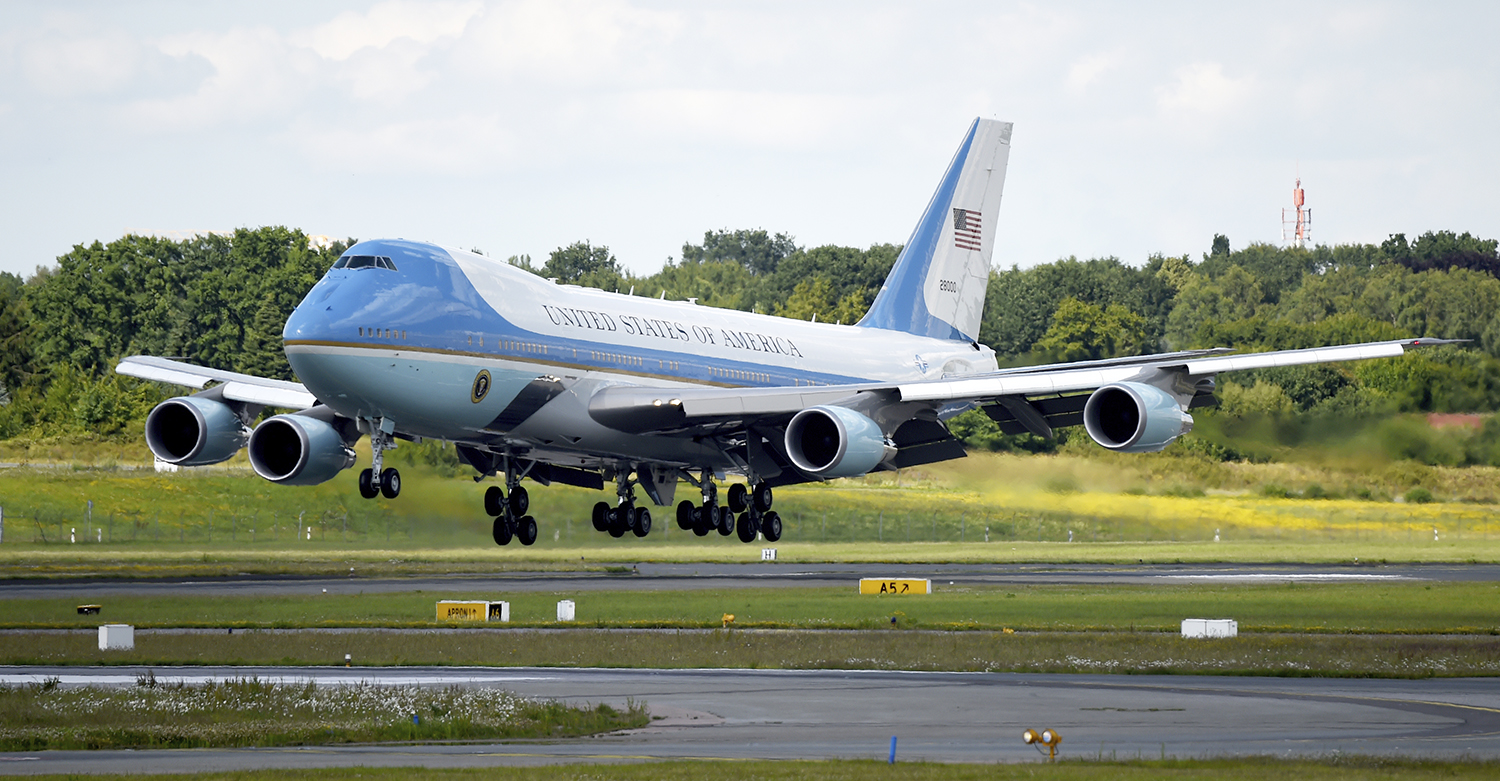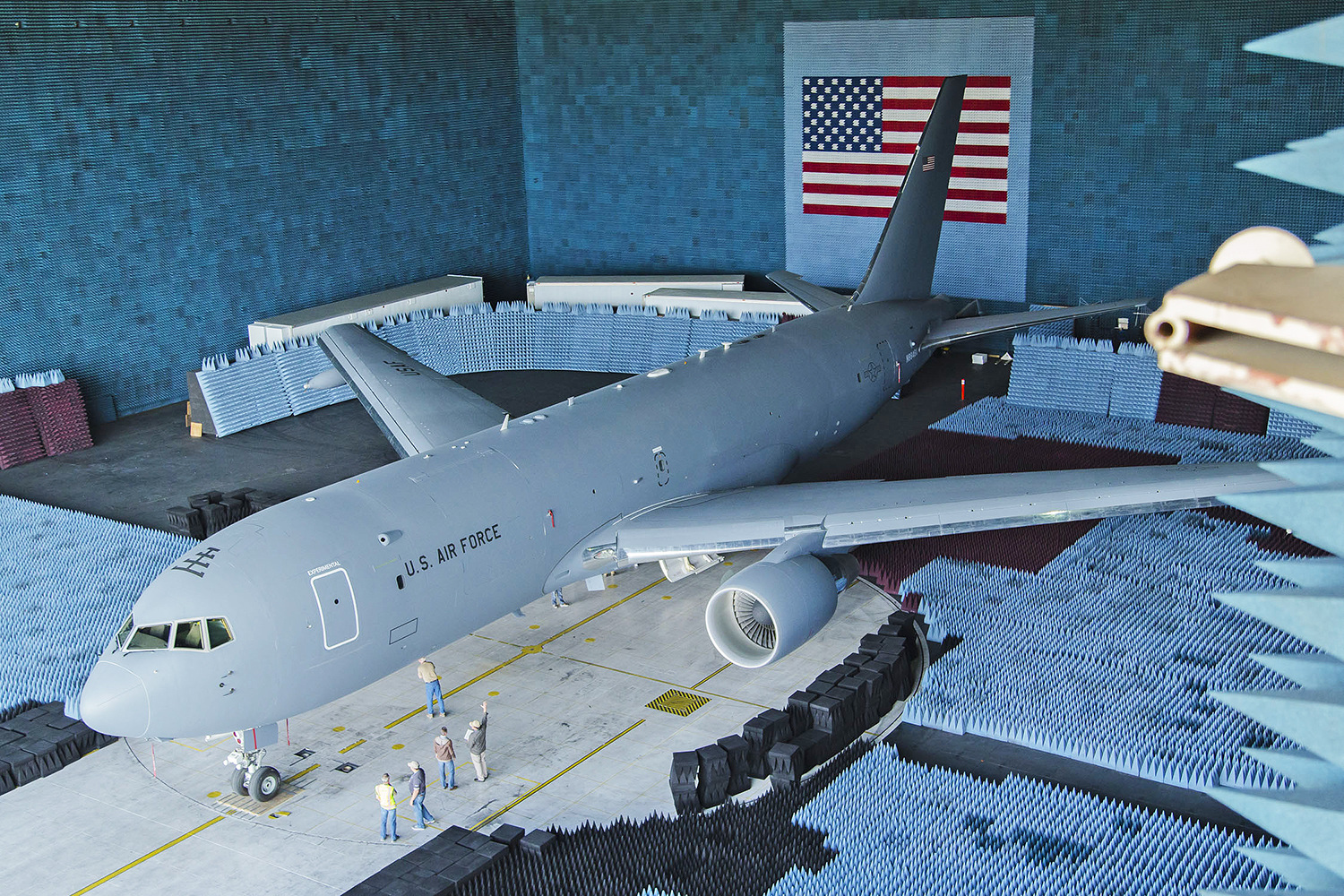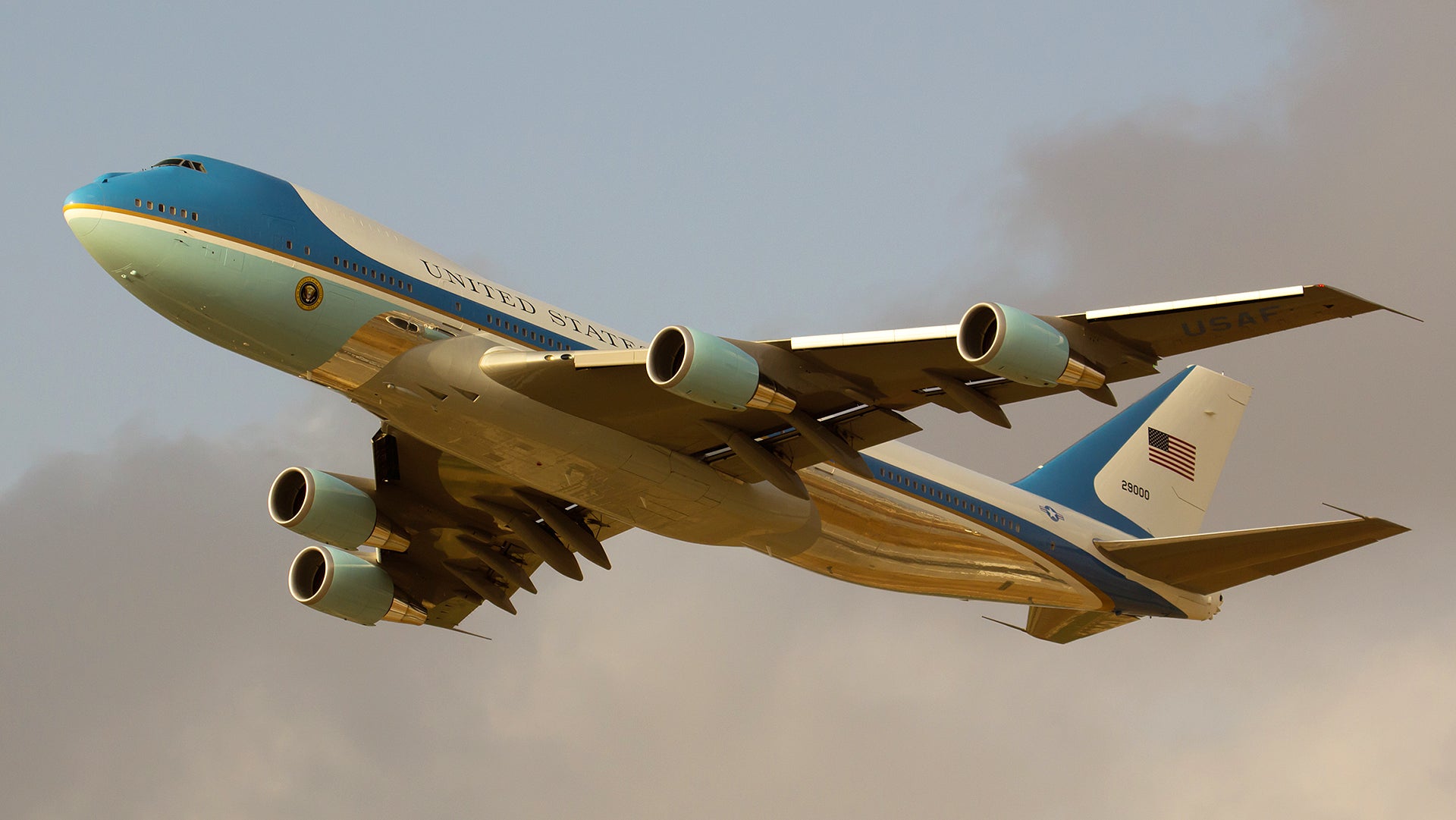General Joint Chiefs of Staff Joseph Dunford told the Senate Armed Services Committee today that it was indeed the White House, not the Air Force, that cut the ability to mid-air refuel from the Air Force One replacement program requirements.
Oriana Pawlyk of Military.com broke the story today after Senator Tom Cotton questioned the Pentagon’s top uniformed official on the necessity to be able to keep the aircraft airborne in the event of a nuclear strike. Dunford replied:
“I think that was a decision that was not made by the Air Force, but made by the White House, and I think it had to do with the fiscal constraints on the program… That will certainly be a limiting factor, and we’ll have to plan accordingly.”
The Senator replied:
“I think we may have to revisit that decision here on Capitol Hill.”
You can watch the entire exchange here:

We discussed how absurd President Trump’s singling out of the Air Force One replacement program was when it originally made headlines, along with the 45th President’s long history with big jets and aviation in general. More recently, The War Zone’s Joe Trevithick highlighted how cutting arbitrarily from the Air Force One replacement program, including axing its aerial refueling capability, based solely on political motivations is not only self defeating, it can also be dangerous in terms of national security:
“Now, it appears that the U.S. Air Force is slashing key requirements, including mid-air refueling, for its new presidential aircraft, the future Air Force Ones, to try and make good on his claim about cutting the cost of the program by $1 billion…
…Mid-air refueling is essential for the aircraft to be able to play its part in the “continuity of government” mission – which you can read about in depth here – and operate in the most demanding situations, including a nuclear apocalypse. That no president has had to use it would be something to be thankful for, not an excuse to get rid of it.
Without an integral aerial refueling system, the president would have to rely on another aircraft, most likely the E-4B Nightwatch airborne command post or a future replacement for it, during an actual emergency. In turn, this would mean that one of these aircraft would have to shadow Air Force One at all times, not just on long-distance trips, or risk having to rendezvous with the president on the ground somewhere, the very kind of scenario the refueling system is there to prevent from ever happening in the first place.
At present, during domestic flights, the Air Force usually dispatches one of its secretive C-20C aircraft, but this small business jet sized aircraft is a poor substitute for Air Force One and wouldn’t be able to provide nearly the same capabilities or protection during a major incident, such as a nuclear attack. Aerial refueling gives the president and his staff time to best assess their options. Without it, despite the fact that the 747-8i, with its engines, offers more than 3 hours of additional flight time, the crew would be on a very fixed timetable to figure things out…
…Whether the goal [of saving around $1B on the program] itself is worth the effort is debatable from a practical point of view. There’s no real suggestion that Air Force One’s costs were seriously “out of control” as Trump had suggested, especially compared to other ongoing projects, even if there is always a very real possibility for feature creep in defense programs. Shaving a quarter of the cost of the planes might sound nice in general, but it’s a drop in the bucket compared to the Pentagon’s overall budget, which the Trump Administration insists it wants to increase dramatically anyways.
In addition to being a relatively small portion of overall defense spending, Air Force One isn’t one of those things you want to cut just for the sake of cutting, either. If there are reasonable things to eliminate, then by all means they should go. The aerial refueling capability and environmental safety features are hardly superfluous, though.
More to the point, adhering to an arbitrary number for purely political reasons, which seems from all accounts to be the real compelling issue for the Air Force here, should never be the motivation when making decisions that could put the president and his successors, who will likely be flying in the new Air Force Ones for decades to come, at unnecessary risk.”
So we have Donald Trump setting the requirements for the VC-25As/Air Force One replacement program, if not in detail, than by making the USAF and Boeing deliver airplanes that he can say he saved a billion dollars on. It was a red herring from the start, and now it’s just lunacy.

Go ahead and redefine exactly what Air Force One needs to be. In fact, the Air Force is supposed to have a review going on for just that right now. But really, if the President wants to really save money than he or she can fly on the E-4B and E-6B replacement aircraft. Eliminate the Air Force One recap program and the idea of a dedicated Air Force One aircraft altogether.
The President and his closest advisors can fly with him or her on the command post aircraft—which will include aerial refueling capability and all the hardened systems needed to survive a nuclear attack—while the press, political lackeys, and all the non-critical White House staff can fly on a USAF 737 or chartered aircraft. Such a plan would also allow for the E-4B and E-6B fleets to be recapitalized faster. Will they be as luxurious, specious, or prestigious as Air Force One? No, but they will serve as a clear sign that the President wants to lead from the front on cuts and he or she won’t sacrifice national security in the process. The Secretary of Defense uses the E-4Bs now for worldwide travel, so there is a clear precedent for using such an aircraft for execute airlift missions.
Another route for truly saving money would be to sacrifice the four engine requirement for Air Force One and select a smaller aircraft that will be more affordable to purchase and operate. The 777 or a version of the KC-46A could work, but like going with an E-4 and E-6 replacement, it would be a tighter fit compared to 747-8i based Air Force One. The KC-46 derivative of the 767 has already been militarized and gone through testing associated with that process. They would also offer commonality with over 100 tankers that will be fielded by the USAF in the coming years.
The current plan being executed by the USAF under Trump uses “orphaned” 747-8i airframes instead of new build aircraft to save money. This seems like a good move at face value, but retrofitting these aircraft with so many specialized systems—including being hardened against electromagnetic pulses given off by detonating nuclear warheads—could end up costing more than just buying spec’d out new airframes in the first place. We just don’t know for sure how much this procurement decision is supposed to save as the Air Force forthcoming with costs for the program.

You can buy undelivered airplanes, but when it comes to key capabilities and subsystems, you can’t cut corners with Air Force One. And it’s not just about protecting the President, its about protecting the continuity of the office. These aircraft are dressed-up survivable command posts that hold the credibility of our nuclear deterrent on their wings. Stripping them down of their core survivability systems is simply not acceptable—and aerial refueling is one of those core systems.
Now we have the Air Force scrambling to make an off the cuff promise by Trump a reality, and so far it’s just this and the F-35 program that seem to get his attention, with a little bit of Ford class supercarrier thrown in. And as Joe mentioned earlier, these aircraft will have to be viable for many decades to come, and upgrading them down the line to what should have been their original configurations would likely be extremely expensive and time consuming.
In the end, all this is a counter-productive distraction, but one that does actually matter. Hopefully Congress can provide some oversight here as the USAF doesn’t seem ready to make a fight out of the issue.
In the end, the aircraft will likely have aerial refueling and other critical systems returned to its specifications, but it will take an unneeded Capitol Hill conflict to see that it does.
Contact the author: Tyler@thedrive.com
